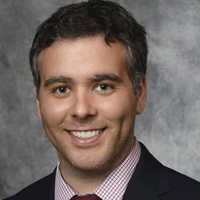
Client often ask me what’s the best way to leave an inheritance to their children. I always respond there’s generally no right or wrong way because it really depends on their particular values and objectives.
However, I believe there are general parameters clients should follow, including trying to avoid controlling their beneficiaries from the grave or setting up their beneficiaries to fail by overwhelming inexperienced or irresponsible beneficiaries with too large a windfall.
As an advisor, my job is to offer clients a variety of options and to help them determine their own objectives when deciding how to leave an inheritance to their loved ones.
Three Access Options
In my experience, estate plans typically incorporate one of the following three options when it comes to a child’s inheritance. Although I use the terms “child” and “children,” these options apply to any potential beneficiary, such as grandchildren, nieces or nephews, or other loved ones.
- Unfettered Access. On one end of the spectrum, some clients allow a beneficiary immediate, unfettered access to an inheritance when a child reaches a certain age – such as 18, 21 or 25.
- Absolute Discretion of Independent Trustee. On the other end of the spectrum, some clients do not want to give a beneficiary any unfettered access, preferring instead that a so-called ‘independent trustee’ (basically anyone who is not a beneficiary or is related to a beneficiary) have absolute discretion to make distributions to a beneficiary. This option is typically used when clients are concerned that a beneficiary (i) might squander an inheritance, (ii) has existing creditors, or (iii) is afraid an ex-spouse will go after the assets.
- Staggered Distributions. In the middle of the spectrum, other clients – especially those with minor children – choose ‘staggered distributions.’ For example, a beneficiary could receive one-third of the inheritance at one age (say 25), one-half the balance at another age (say 30), and the remaining balance at a final age (say 35). Under this structure, a trustee would always have the discretion to make additional distributions as necessary for a beneficiary’s health, education, maintenance, or support.
A $3 Million Example
Importantly, the above options should not be viewed as stand-alone ones, because clients can incorporate one or more of them in their estate plan. Let’s use an example.
Jessica, 72 and recently retired, plans to leave $3 million of non-qualified assets equally to her two children, ages 34 and 30. Therefore, each child would inherit $1.5 million worth of non-qualified assets. In addition, if Jessica’s non-qualified assets appreciate to more than $3 million, she plans to leave the excess to charity. In other words, Jessica wants to limit each child’s inheritance of non-qualified assets to $1.5 million.
Jessica has three primary objectives regarding her children’s inheritances. First, she wants each child to receive a sizeable distribution as soon as possible after her death. Second, although she adores both of her children’s partners, she also recognizes the high rates of divorce, so she is interested in protecting a large portion of her children’s inheritances in the event of divorce. Third, she does not want the administration of her plan to be unnecessarily expensive or complicated after her death.
Jessica ultimately decides each child should receive $500,000 of their $1.5 million inheritance as soon as possible after her death. But she wants the remaining $1 million to be held back in trust (known as the “withheld share”).
Different Levels of Protections
With regard to each child’s withheld share, Jessica could incorporate one of three different trustee arrangements depending on the level of protection she wants. (Note that these do not reflect the only options, but they are relatively common.)
- Professional Trustee. For the most protection, she could require that a professional trustee – such as a bank or trust company – must serve as trustee of each child’s withheld share. However, this may not be appropriate to achieve Jessica’s objectives because she doesn’t want the administration to be overly complicated or expensive. In my experience, most clients (unless they are high net worth) believe that involving banks or trust companies will be too onerous and expensive.
- Independent Trustee with Absolute Discretion. Another option would be to require an independent trustee to serve as trustee of each child’s withheld share. An independent trustee could be defined in the trust as anyone who, in essence, is not a beneficiary of the trust and who is not related to a beneficiary. This could be, for example, a best friend, colleague or trusted advisor.
- Children Serve as Trustee (with Limitations). This third option would be to allow each child to serve as trustee of their own withheld share. Under this structure, the children would be permitted to make distributions to themselves, but they would only be able to make those distributions for their health, education, maintenance, or support (also known as an ascertainable or HEMS standard). The trust should also state that, in the event a child resigned as a trustee, then an independent trustee would be required. In addition, ideally Jessica would communicate to the children that, in the event of a likely divorce (or lawsuit by a creditor), then that child should resign as trustee.
Added Flexibility and Protection
It’s important to note that with any of the above options, each child could be given the authority to remove any trustee of that child’s withheld share, and subsequently appoint a new trustee so long as the new trustee is an independent trustee. As a result, the children would retain a significant amount of control over the administration of their withheld shares. Or, if the client is uncomfortable giving children the authority to remove and appoint a trustee, these powers could be granted to other individuals or advisors, such as family members or trust protectors.
A trust protector can be thought of as an individual or group of individuals who has authority to oversee the trustee and/or who has been given certain powers that are not otherwise given to the trustee (such as the ability to alter the terms of the trust in order to provide flexibility to meet changing circumstances in the future). Incorporating provisions that allow for a trust protector can provide extremely beneficial flexibility in a trust, especially when that trust may hold a loved one’s inheritance for decades in the future.
The point is there are many options from which clients can choose if they decide to protect all or a portion of their children’s inheritances by retaining those inheritances in trust. These options typically revolve around the following authority: the amount of discretion a trustee has to make distributions to a beneficiary; who is allowed to make distributions to a beneficiary; and who has the ability to remove and/or appoint the individual(s) who decide on the distributions to a beneficiary.
Final Considerations
Financial advisors often have a close relationship with their clients, especially regarding their outlook on what wealth means to them and how they want that wealth to be used for the benefit of future generations. This insight offers extremely valuable context to attorneys when we determine which options to present clients for their estate plans.
I do not believe all clients should attempt to protect some or all of an inheritance they are leaving to loved ones, but I do think they should be aware that it’s possible to incorporate some of these protections so that they can decide for themselves.
Additional Reading: Equalize Children’s Inheritances with Life Insurance
In my experience, clients who do decide to include such protections are a bit older and have therefore seen how quickly wealth can evaporate through divorce, poor judgment and a myriad of other circumstances that life can bring. These clients take their estate plans seriously, and they revisit their legal documents every few years to ensure that their plans continue to reflect their objectives.
Matthew Guanci, who holds an LL.M in taxation and estate planning, established Boston-area Guanci Law in 2018 after working for several boutique law firms as an estate planning and tax law specialist. He can be reached at matthew@guancilaw.com.







